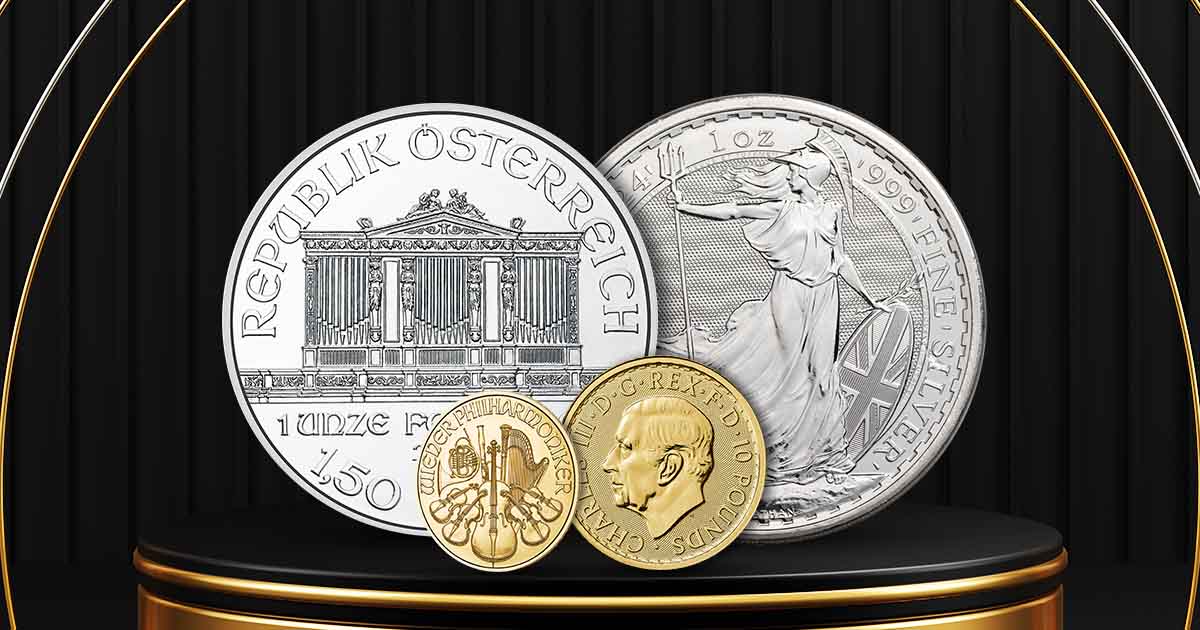Bullion comes in many shapes and sizes. Whether you are a novice or experienced investor, the vast selection available can make buying bullion an intimidating experience. Bullion comes from all over the world from both
private and public mints, highlighting the importance of Precious Metals around the globe. APMEX provides the informational tools to help make searching for
Gold,
Silver or
Platinum bullion a little easier.
There is history and meaning behind every piece of bullion produced. Take the opportunity to learn
what bullion is, what common coin types are, who buys bullion and what makes each Precious Metal unique. Having valuable information will help you make an informed decision on your specific bullion needs.
WHAT IS BULLION?
Simply put, bullion refers to Precious Metals in bulk form, valued by weight. Bullion is seen by many, including numismatists, as being
Gold and
Silver bars and coins. While Silver and Gold bars and coins are indeed considered bullion, the definition of bullion covers
several forms of Precious Metals. By oversimplifying its definition, investors limit its scope and role in Precious Metals buying.
There are multiple factors to consider when buying bullion:
- Precious Metals value: Bullion and Precious Metals values are often mentioned together. any factors such as the economy, supply and demand, trading frequency and political circumstances play a role in bullion value. Whether you are interested in bullion bars or coins, understanding the value will help put your purchasing power into perspective.
- Bullion shapes: Bullion comes in many shapes, such as bars and rounds, but can also come in non-traditional shapes like stars and Silver bullets. Hand-poured Silver is considered bullion, even though it does not have a traditional finish as molded bars do. Some jewelry can even be considered bullion.
- Coin types: Bullion coins come in a variety of types from around the world. These common coins are considered bullion and are highly valuable, including the Australian Kookaburra and Kangaroo coins, American Eagle and Buffalo coins, Canadian Maple Leafs, Austrian Philharmonics, British Sovereigns and Britannias, Mexican Libertads and Pandas from the Central Mint of China. These coin types are just some of the many bullion coins available.
- Precious Metal types: Bullion extends to both Platinum and Palladium, which are rarer than Gold and Silver. Despite the rarity, Platinum bullion and Palladium bullion are readily available for investors.
WHY BULLION IS VALUABLE
Bullion appeals to many investors because the sizes and shapes vary, providing a plethora of options. The traditional 1 oz Precious Metals sizes are common, but other sizes include
1/10 oz Gold or
5 oz Platinum, and even
1/4 oz Silver or 1/2 oz Palladium. Smaller sizes provide an affordable approach for buyers because they do not require a large financial commitment but still make a nice introduction to bullion collecting.
Larger sizes of bullion can also be purchased; sizes like the
10 oz Silver bar or
1 kilo Gold Bars and Rounds. They require more of a financial commitment but add diversity to any Precious Metals portfolio.
COLLECTING GOLD AND SILVER BULLION
The appeal of investing in bullion is different for each buyer, but the vast array of options to choose from ensures there is something for everyone. Novice and experienced investors can find something within their budget and investment strategy. Having a good understanding of what makes bullion so unique and valuable will go a long way in helping you develop and reach your investment goals.





















